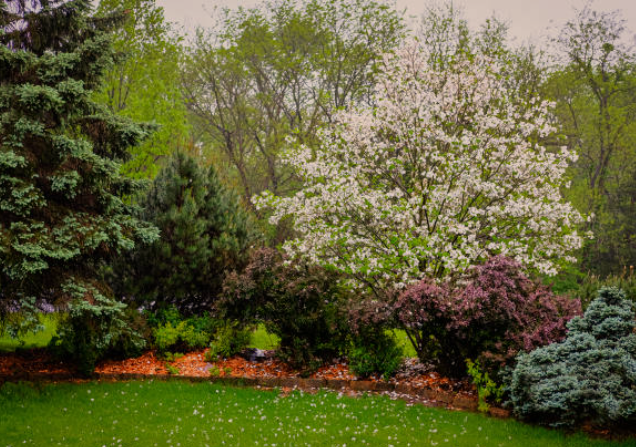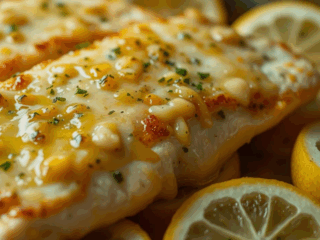As I care for my garden, I always think about the best compact trees for my flower beds.
The right trees make my garden look better, adding shade, texture, and balance.
With so many choices, picking the right trees can be hard.
After a lot of thought, I’ve picked six amazing compact trees for flower beds.
These trees are beautiful, strong, and easy to care for. They’re great for gardeners of all levels.
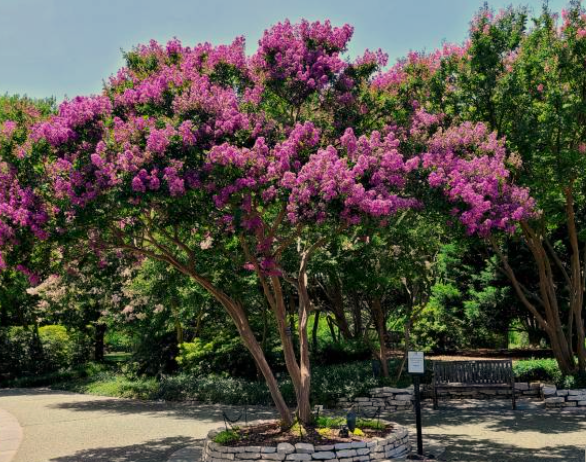
The Beauty of Small Trees in Garden Design
Small trees are key in modern garden design.
They add both beauty and function.
They help make outdoor spaces look good and lively.
Vertical Interest and Year-Round Structure
Small trees bring vertical interest to gardens.
They stand out more than shrubs or flowers, adding depth.
Plus, many small trees look great all year, with different looks in each season.
For example, the Japanese Maple (Acer palmatum) shows off beautiful autumn colors.
Its branches also add interest in winter.
Space-Efficient Solutions for Modern Gardens
In today’s gardens, space is often limited.
Small trees are perfect for small gardens or tight spots.
They offer the benefits of bigger trees but take up less room.
Small trees fit well in many places, from city gardens to countryside landscapes.
Choosing the right small tree can make a garden beautiful and useful.

Why Small Trees for Flower Beds Make Perfect Sense
Adding small trees to flower beds is a smart move.
They bring variety and make gardens more lively and interesting.
Small trees for flower beds add depth and interest.
They help create a garden that grabs your attention.
Creating Multi-Dimensional Landscapes
Small trees add layers of texture, color, and height.
For example, a dwarf tree with bright leaves or flowers can be a beautiful backdrop.
It makes the garden look even better.
Extended Seasonal Interest Beyond Flowers
Even when flowers are gone, small trees keep the garden interesting.
Their leaves, bark, or shape add beauty all year round.
Choosing the right small trees can make your garden change with the seasons.
It keeps the garden exciting all year.
Selecting the Right Small Trees for Flower Beds
Choosing the right small trees for your flower beds can make your garden look amazing.
When picking small trees, think about how they’ll fit with your garden.
You want them to add beauty, not take over.
Size Considerations and Growth Rates
Think about how big the tree will get and how fast it will grow.
Slow-growing trees are great because they need less care.
They also won’t get too big for their spot.
For example, the Dwarf Alberta Spruce grows slowly, perfect for small gardens.
Root System Compatibility
The tree’s roots should get along with your flower beds.
Some trees have roots that spread a lot and can take over.
Trees like the Japanese Maple have smaller roots, which is good for gardens with delicate flowers.
Climate and Hardiness Factors
It’s important to pick trees that fit your local weather and USDA Hardiness Zone.
This helps the tree do well and look its best.
For example, the Dwarf Crape Myrtle loves warm weather, making it great for southern gardens.
6 Small Trees for Flower Beds: Perfect Companions for Your Blooms
Small trees can add structure and interest to flower beds all year.
It’s key to think about size, growth rate, and how well they fit with other plants.
I’ve picked six small trees that are great for flower beds.
Each one brings something special to your garden.
They make your garden look better and add depth.
Comparison Table of Our Top Picks
| Tree Type | Mature Size | Growth Rate | Special Features |
|---|---|---|---|
| Japanese Maple | 10-15 ft | Slow | Stunning fall colors |
| Dwarf Flowering Dogwood | 15-20 ft | Medium | Showy spring flowers |
| Dwarf Alberta Spruce | 6-10 ft | Slow | Evergreen foliage |
| Dwarf Crape Myrtle | 8-12 ft | Medium | Vibrant summer blooms |
| Dwarf Weeping Cherry | 15-25 ft | Fast | Spring flowering drama |
| Star Magnolia | 10-15 ft | Slow | Early spring flowers |
Japanese Maple (Acer palmatum)

Japanese Maple, or Acer palmatum, is loved for its many varieties and small space adaptability.
This tree is famous for its beautiful leaves that change colors in the fall.
They turn orange, red, and yellow.
Varieties and Color Options
The Japanese Maple has a wide range of varieties.
You can find everything from ‘Dissectum’ with its delicate leaves to ‘Atropurpureum’ with its bright red leaves.
There’s a Japanese Maple for every garden.
‘Bloodgood’ is known for its deep red leaves.
‘Butterfly’ has leaves with white margins.
These are just a few examples.
Growth Habits and Size Expectations
Japanese Maples grow slowly, perfect for small gardens.
They can be 6 to 25 feet tall, depending on the type.
‘Compactum’ and ‘Nana’ are dwarf varieties that stay small.
Care Requirements and Ideal Conditions
Japanese Maples need well-drained soil and partial shade, more so in warm places.
They need regular water, but not too much. Mulching helps keep the soil moist and weeds away.
| Variety | Leaf Color | Size | Growth Rate |
|---|---|---|---|
| Bloodgood | Deep Red | 15-20 feet | Slow |
| Dissectum | Green, turning orange | 10-15 feet | Slow |
| Butterfly | Variegated | 8-12 feet | Slow |
Dwarf Flowering Dogwood (Cornus kousa)
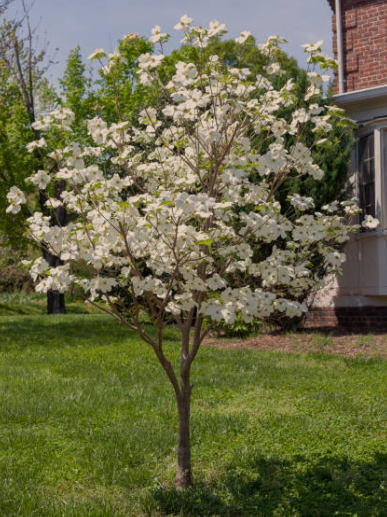
Cornus kousa, or Dwarf Flowering Dogwood, adds beauty to flower beds all year.
This small tree is known for its stunning flowers, leaves, and berries.
It’s a great choice for gardeners looking for variety.
Stunning Seasonal Displays
The Dwarf Flowering Dogwood is famous for its showy white flowers in late spring.
These flowers are not just pretty, but also turn into red berries in fall.
The tree’s leaves change colors with the seasons, making it even more beautiful.
Compact Growth Pattern
The Dwarf Flowering Dogwood is known for its compact growth habit.
It grows to about 10-15 feet tall, perfect for small gardens. It grows slowly, so it needs less pruning, making it easy to care for.
Planting and Maintenance Tips
To keep your Dwarf Flowering Dogwood healthy, follow these tips:
- Plant in well-draining soil with a slightly acidic pH.
- Water regularly the first year after planting.
- Apply a layer of mulch to keep moisture in and weeds out.
- Fertilize every year with a balanced, slow-release fertilizer.
| Characteristic | Description | Benefit |
|---|---|---|
| Flower Color | White | Showy blooms in late spring |
| Fruit | Red berries | Fall interest and attraction for wildlife |
| Mature Height | 10-15 feet | Ideal for compact spaces |
| Growth Rate | Slow to moderate | Less frequent pruning required |
Dwarf Alberta Spruce (Picea glauca ‘Conica’)
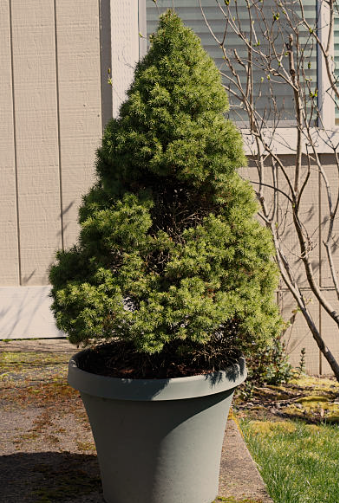
Adding the Dwarf Alberta Spruce to flower beds brings a stunning contrast.
It adds depth and interest all year round.
Evergreen Benefits in Flower Beds
The Dwarf Alberta Spruce stays green all year, making it a constant in your garden.
Its evergreen nature is great for flower beds.
It stands out against the changing colors and textures of other plants.
Slow Growth Rate Advantages
The Dwarf Alberta Spruce grows slowly. This means it needs less pruning and care than fast-growing trees.
This slow growth also makes it a stable feature in your garden. Its size and shape stay the same over time.
Seasonal Care Guide
To keep your Dwarf Alberta Spruce healthy, follow a seasonal care plan.
- In spring, check for winter damage and fertilize with a balanced mix to encourage growth.
- In summer, make sure it gets enough water, even when it’s dry.
- In fall, add mulch to keep moisture in and protect the roots from cold.
Dwarf Crape Myrtle (Lagerstroemia indica dwarf varieties)
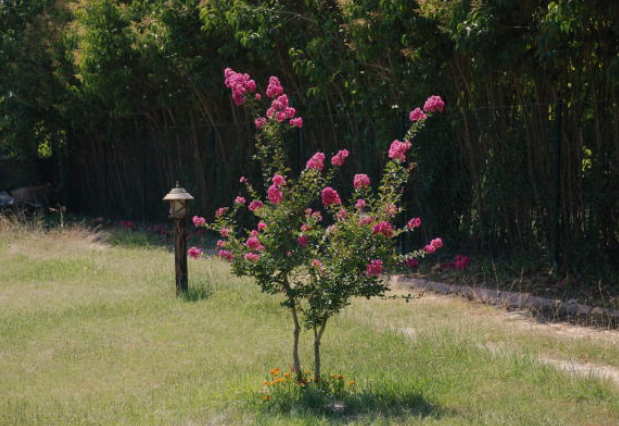
Summer gardens come alive with the breathtaking blooms of Dwarf Crape Myrtle, a dwarf variety of Lagerstroemia indica. This compact flowering tree is perfect for adding a vibrant touch to flower beds without overwhelming the surrounding landscape.
Summer Flowering Spectacle
Dwarf Crape Myrtle is renowned for its stunning summer flowers, which can last for months. The blooms come in a variety of colors, including pink, purple, and white, adding a dramatic flair to any garden. The flowers are not only beautiful but also attract pollinators, enriching your garden’s biodiversity.
Heat and Drought Tolerance
One of the key advantages of Dwarf Crape Myrtle is its heat and drought tolerance. This makes it an ideal choice for gardens in warmer climates or areas experiencing water restrictions. The tree’s ability to thrive in challenging conditions means it requires less maintenance, making it perfect for busy gardeners.
Pruning for Maximum Blooms
To maximize the blooming of your Dwarf Crape Myrtle, regular pruning is essential. Prune the tree in late winter or early spring, removing any dead or damaged branches. This not only encourages healthy growth but also promotes more vigorous blooming in the summer months.
By incorporating Dwarf Crape Myrtle into your garden design, you can enjoy a stunning display of summer flowers while benefiting from its hardiness and low maintenance requirements.
Dwarf Weeping Cherry (Prunus subhirtella ‘Pendula’) and Star Magnolia (Magnolia stellata)
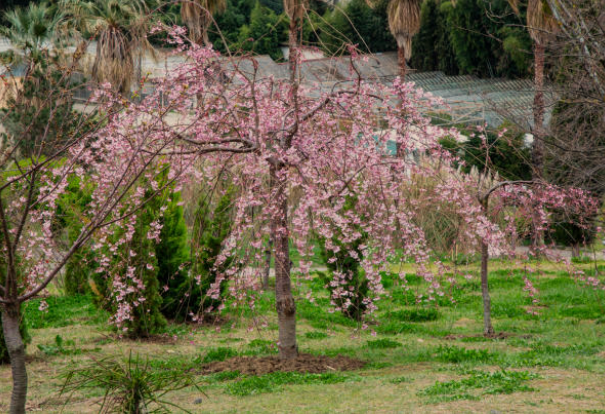
Exploring compact trees for flower beds, I found two gems: Dwarf Weeping Cherry and Star Magnolia. They add beauty and unique qualities to your garden.
Weeping Cherry: Spring Flowering Drama
The Dwarf Weeping Cherry, known as Prunus subhirtella ‘Pendula’, dazzles with its spring flowers. Its branches cascade with pink blooms, drawing eyes to it. It’s a true marvel, admired by all.
Weeping Cherry: Site Selection and Care
For the Dwarf Weeping Cherry to thrive, choose a spot with full sun and good drainage. Regular watering and pruning are key. With the right care, it will bloom beautifully for years.
Star Magnolia: Early Spring Impact
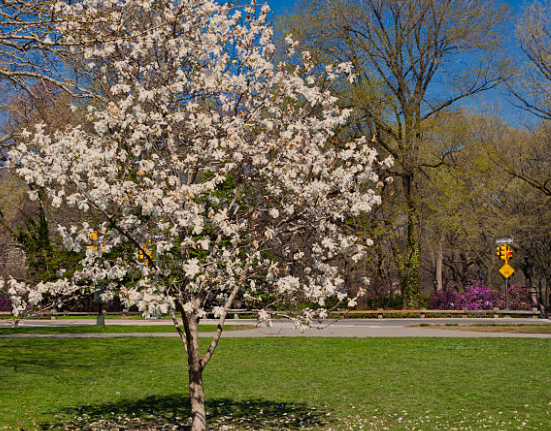
Star Magnolia, or Magnolia stellata, lights up early spring with its star-shaped flowers. These are white or pale pink, contrasting beautifully with the tree’s dark branches. It’s a spring joy, adding vibrancy to your garden.
Star Magnolia: Growing Requirements
Star Magnolia needs slightly acidic, well-draining soil and full sun to partial shade. Regular watering and mulching keep it healthy and vibrant.
Both Dwarf Weeping Cherry and Star Magnolia add beauty to flower beds. Knowing their needs ensures their splendor for years.
Design Tips for Integrating Small Trees with Flower Beds
Placing small trees in flower beds can make your garden look better and work better. By choosing the right spots for these trees, you can make your garden interesting all year round.
Creating Focal Points and Visual Anchors
Small trees are great for making focal points in your garden. Think about the tree’s size, shape, and color when placing it. For example, a Japanese Maple with bright leaves can be a beautiful centerpiece.
Choose plants around the tree that match its color and texture. This will make the tree stand out even more.
Companion Planting Suggestions
When picking plants to go with your tree, think about how they grow, what soil they need, and when they bloom. For example, a Dwarf Flowering Dogwood looks great with spring bulbs like tulips and daffodils. A Dwarf Crape Myrtle paired with summer flowers can keep your garden colorful all summer.
Seasonal Planning for Continuous Interest
To keep your garden interesting all year, plan for each season. Mix plants that bloom in spring, have green leaves in summer, change colors in fall, and have interesting shapes in winter. For example, a Star Magnolia blooms in early spring and its branches look great in winter.
| Tree Type | Seasonal Interest | Companion Plants |
|---|---|---|
| Japanese Maple | Fall color | Autumn asters, sedum |
| Dwarf Flowering Dogwood | Spring flowers | Tulips, daffodils |
| Dwarf Crape Myrtle | Summer blooms | Lantana, salvias |
Conclusion
Adding small trees to your flower beds can make your garden look better and more interesting. These trees add height, structure, and beauty all year long. They also keep your garden looking good even when flowers are not in season.
The 6 small trees we talked about are great for flower beds. They include Japanese Maple, Dwarf Flowering Dogwood, and Dwarf Alberta Spruce. Also, Dwarf Crape Myrtle, Dwarf Weeping Cherry, and Star Magnolia are excellent choices. Each tree has its own look, growth, and care needs. This lets you pick the perfect tree for your garden.
By adding these small trees to your flower beds, you can make a garden that changes with the seasons. I suggest you think about these options and start planning your garden makeover. This will bring beauty and charm to your garden. And, you’ll enjoy the fruits of your labor.
FAQ
What are the benefits of using small trees in flower beds?
Small trees add vertical interest and provide structure all year. They are space-efficient, making modern gardens more interesting. They also extend the garden’s beauty beyond flower seasons.
How do I choose the right small tree for my flower bed?
When picking a small tree, think about size, growth rate, and root system. Also, consider the climate and hardiness to make sure it thrives in your garden.
What are some popular small tree options for flower beds?
Popular small trees include Japanese Maple and Dwarf Flowering Dogwood. Also, Dwarf Alberta Spruce, Dwarf Crape Myrtle, Dwarf Weeping Cherry, and Star Magnolia are great choices. Each offers unique features and benefits.
How do I care for my small tree in a flower bed?
Care for your small tree varies by species. It usually includes proper planting, watering, pruning, and protection from extreme weather. This keeps the tree healthy and thriving.
Can I use evergreen small trees in my flower bed?
Yes, evergreen small trees like Dwarf Alberta Spruce are great for flower beds. They provide year-round interest and a consistent backdrop for seasonal flowers and foliage.
How do I integrate small trees with other plants in my flower bed?
To create a beautiful flower bed, consider companion planting and create focal points. Plan for seasonal interest to make your garden dynamic and engaging.

